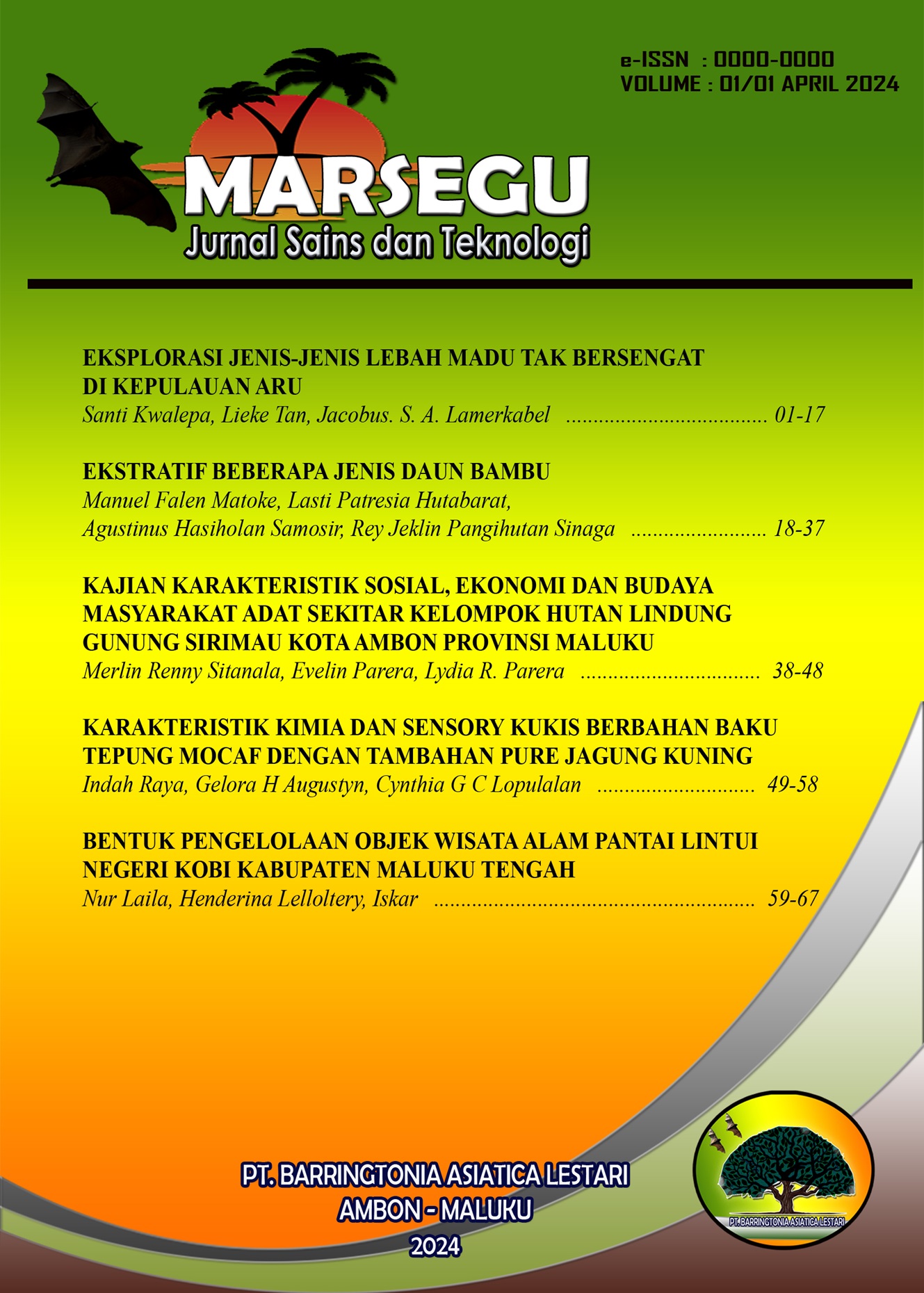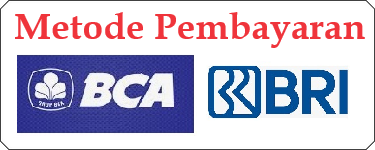EKSTRATIF BEBERAPA JENIS DAUN BAMBU
DOI:
https://doi.org/10.69840/marsegu/1.1.2024.49-58Keywords:
Carbon, polar, semi-polar, terpene, calorific valueAbstract
This research aims to determine the extractive content based on the type of solvent in several types of bamboo leaves. Air dried bamboo leaves were chopped into particles and ground using a blender. After it was finely ground, the sago waste was sieved using 40 and 60 mesh sieves, to obtain bamboo leaf powder with a size of -40/+mesh (TAPPI T 257 cm-85) for testing chemical components. Testing for bamboo leaf powder includes testing the content of cold-water soluble extractive substances, the content of hot-water soluble extractive substances, and the levels of ethanol-toluene soluble extractives. The results of the research showed that the type of bamboo leaf had a significant effect on the levels of cold-water soluble extractive substances, the levels of hot-water soluble extractives, and the levels of ethanol-toluene soluble extractives. Cold water soluble extractive content was 8.4149-10.6612%, hot water soluble extractive 9.1871-10.7843% and ethanol-toluene soluble extractive 4.2009-7.1242%. The solubility of extractives in hot water tends to be higher for all types of leaves and suanggi bamboo tends to contain higher extractives for each type of solvent.
Downloads
References
Amalia, R., & Anggarani, M.A. 2022. Analisis Kadar Fenolik, Flavonoid Dan Aktivitas Antioksidan Umbi Bawang Bombai (Allium Cepa L.). Unesa Journal of Chemistry, Vol. 11, No. 1, Januari 2022
Chung, M.S., Lee, G.W., Lee, S.S., Chung, B.Y., & Lee, S. 2020. Comparative analysis of volatile terpenoids composition in Rosemary leaves in response to ionizing radiation. Journal of Essential Oil-Bearing Plants, 48 – 54.
Domingos, I., Ayata, U., Ferreira, J., Cruz-Lopes, L., Sen, A., Sahin, S., & Esteves, B. 2020. Calorific power improvement of wood by heat treatment and its relation to chemical composition. Energies, 13(20), 1–10.
Henne, R.A., Brand, M.A., Schveitzer, B., & Schein, V.A.S. 2019. Thermal behavior of forest biomass wastes produced during combustion in a boiler system. Revista Arvore, 43(1), 1–9.
Khan, M.d,. I.R., Saha, R.K., & Saha, H. 2018. Muli bamboo (Melocanna baccifera) leaves ethanolic extract a non-toxic phyto-prophylactic against low pH stress and saprolegniasis in Labeo rohita fingerlings. Fish and Shellfish Immunology 74 (2018) 609–619.
Mauladdini, R., Syafii, W., & Nawawi, D.S. 2022. Pengaruh Zat Ekstraktif Kayu Gamal (Gliricidia sepium Jacq.) Terhadap Nilai Kalor. Penelitian Hasil Hutan Vol. 40 No. 2, Juli 2022: 125–134.
Romansyah, E., Dewi, E.S., Suhairin, Muanah, & Ridho, R. 2019. Identifikasi Senyawa Kimia Daun Bambu Segar Sebagai Bahan Penetral Limbah Cair. AGROTEK Vol. 6 No. 2, Agustus 2019.
Siruru, H., Syafii, W., Nyoman, J., & Pari, G. 2019. Karakteristik Metroxylon rumphii (limbah empulur dan kulit kayu) dari Seram, Maluku, Indonesia. Biodiversitas, 20(12), 3517-3526.
Siruru, H., Liliefna, L.D., Tan, L., Titarsole, J., & Anatatoty, J. 2024. Characteristics of Several Types of Palmyra Stem (Borassus sp) Extractives Based on GCMS (Gas Chromatography and Mass Spectroscopy) Analysis. Volume 9, Issue 2, February – 2024. International Journal of Innovative Science and Research Technology.
Stolarski, M.J., Krzyzaniak, M., Załuski, D., & Niksa, D. 2018. Evaluation of biomass quality of selected woody species depending on the soil enrichment practice. International Agrophysics, 32(1), 111–121.
Sumbono, & Aung. 2015. Biokimia Pangan Dasar. Yogyakarta: Penerbit Deepublish.
Downloads
Published
Issue
Section
License
Copyright (c) 2024 Manuel Matoke, Lasti Hutabarat, Agustinus Samosir, Rey Sinaga (Author)

This work is licensed under a Creative Commons Attribution-ShareAlike 4.0 International License.




















